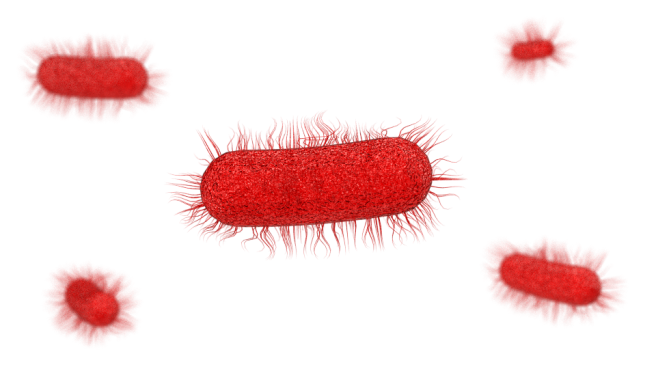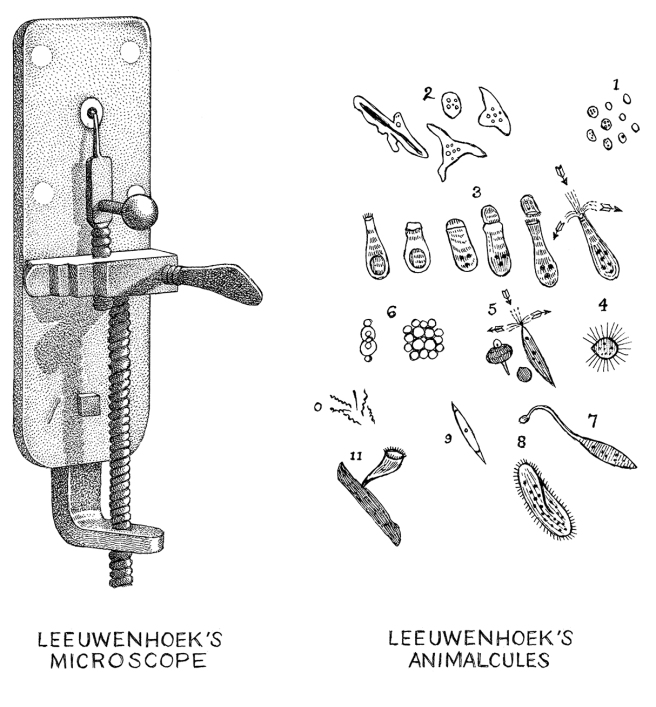
As a child I had read “Microbe Hunters“, by Paul de Kruif, an amazing book that covered the history of bacteriology, starting with Van Leeuwenhoek (first person to see a microbe), Spallanzani (proved that life doesn’t arise spontaneously), Pasteur (microbes are menace), Koch (who identified cause of TB and cholera), Walter Reed (vectors of yellow fever) and Paul Ehrlich( who proved that synthesized organic compounds can kill microbes and thus laid the foundations of pharmaceutical science).
Of all of these pioneers the story of Van Leeuwenhoek was the most interesting. Given that the concept and basic science behind a microscope was known( circa ~1670), after all Robert Hooke had described structures in thin slices of plant leaves which he called “cells”, it was most impressive that a cloth merchant could make microscopes that were unrivaled in their quality and magnification by anything available then, so much so that the Royal Society sent emissaries begging Leeuwenhoek to sell a microscope at any price!
That particular edition of “Microbe Hunters” was a worn hand me down copy (published in sometime during the second world war as evidenced by ” conserve paper, aid the war effort” stamped on dust cover) without any illustrations. As child I tried to visualize Leeuwenhoek’s microscope, reasoning that if he could do it in 17th century without any specific science skills so could I.
To this day I can remember the lines from “Microbe Hunters”, to quote “For twenty years after that very little is known about him, except that he had two wives (in succession) and several children most of whom died, but there is no doubt that during this time he was appointed janitor of the city hall of Delft, and that he developed a most idiotic love for grinding lenses”.
And it was those two words:”grinding lenses” that sent me down the wrong track. A search through the local library showed books on complex glass handling and polishing techniques. I knew that I could not grind or polish lenses and I concluded, with much regret, this is requires adult supervision/help and tools and hence is not for a 10 year old.
Now, a score and ten years later, with access to information not limited to the contents of the local library, rather limited only by my curiosity and correct google search terms I found to my utter delight that making a Leeuwenhoek’s microscope is within the reach of a 10 year old.
Leeuwenhoek’s microscope was not a compound microscope, rather a single spherical lens.
 And the internet has number of sites that show various methods in fabrication of such a simple microscope such as pulling out the lens from a laser pointer and fixing it in front of a cellphone camera(link). Or using a prefabricated glass beads from chemistry lab and using a 3D printed holder (link).
And the internet has number of sites that show various methods in fabrication of such a simple microscope such as pulling out the lens from a laser pointer and fixing it in front of a cellphone camera(link). Or using a prefabricated glass beads from chemistry lab and using a 3D printed holder (link).
However having given up this microscope as a child, due to the perceived problems in making the lens, goal lay in making microscope and the lens entirely by hand.
Fabrication of the lens is so trivial , requiring just a few minutes of work. All that is required is butane torch and thin glass rod. By heating thin strand of the glass it is possible to make a spherical lens ( tinnier the glass bead better the resolution). And for making a translation stage , that would move the sample within focal spot of the lens, Prof. Patrick Keeling showed that piece of blue tack or even a chewing gum can be used (Do check out the instructions uploaded on his website:link).

After few minutes of fiddling with a very crude prototype (assembled in 5 minutes) , I a routine user of complex optical microscopes, electron microscopes and even an atomic force microscope that can “sense” structures as small as few nanometers, said loudly in awe ” this is so cool” upon seeing microscopic organisms in a pond water sample with such a simple elegant instrument!
Science is an quest to understand. But the story is not complete till you help others to understand. And there in lies the problem. While a poet tells what everyone knows, a scientist tells what no one knows and thus needs to use words very carefully. For it is words that offer a means to meaning and the use of an word with an ambiguous meaning could lead the readers down a wrong track.

Nice write up
LikeLike
thank you
LikeLike